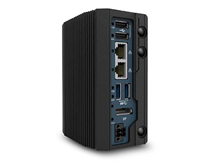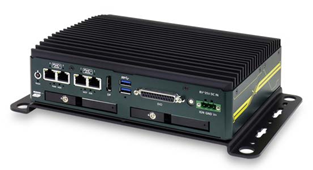Which Processors are Best for Embedded Vision?
Welcome to the next instalment of machine vision blogs from ClearView Imaging. This week we will be continuing to explore embedded vision, this time looking at the best processors to embed in a vision system.
Whether you’re interested in building powerful embedded vision systems, compact embedded vision devices, or are just interested in learning more about the topic, this blog post is for you. Ultimately, embedded vision is the future of many machine vision applications in robotics, industrial automation, medicine, life sciences, and the automotive industry, just to name a few. We hope you enjoy reading.
Conventional CPU Processors vs Embedded Vision Processors
When we think about computer processors, perhaps the names Intel and AMD spring to mind. These major CPU manufacturers produce powerful CPUs for the vast majority of computers, and a more traditional machine vision system would most likely incorporate a standard camera with a computer such as this.
But in the world of embedded vision, more creative, space-saving solutions are required. Just as we have covered with cameras, you also need a processor that will be powerful enough to meet the machine vision tasks you need your embedded vision device or system to perform, but not too powerful that you end up sacrificing budget or device portability in terms of size.

A good pairing for an embedded vision system could be the Teledyne FLIR Board Level BlackFly S combined with the NVIDIA Jetson TX2.
Choosing a Processor for Embedded Vision
The above components are great examples of compact, reliable embedded vision components. NVIDIA’s Jetson family are a range of small form-factor, high-performance computer board that can utilise AI to reinforce processing capabilities at the edge.
Other products similar to the Jetson include the Google Coral and Raspberry Pi. These micro-computers utilise ARM processors to process images and video on the edge – and they represent great options when it comes to embedded vision boards.
If you’re building a larger embedded vision system or machine, there are still compact options available with more power. Taking a larger form but still smaller than most industrial embedded computers, Matrox and Neousys offer systems with processor options from Intel and ARM, with or without powerful NVIDIA GPUs.

Neousys POC-40 is an extremely compact (52 x 89 x 112 mm) fanless computer. It features Elkhart Lake Atom® processor and is designed for space-restricted applications – perfect for embedded vision. Complete with I/O functions, such as two Gigabit Ethernet ports, four USB 3.1 Gen1/ 2.0 ports, four COM ports and optional isolated digital I/Os for industrial communication and control.

The new NRU-120S series from Neousys is a new rugged edge AI-based video analytics PC powered by NVIDIA Jetson AGX Xavier. Larger than the POC-40 but packing a bigger punch, it comprises an 8-core ARM CPU and NVIDIA® Volta GPU with 512 CUDA cores and 64 Tensor cores that offer 11 TFLOPS FP16 or 22 TOPS INT8 computing power.
Embedded Vision GPUs and FPGAs
Embedded vision systems by nature must be highly compact, whilst still able to capture high quality images. As you would imagine, this means that processing structure is quite different from what is found in most machine vision systems.
Whilst embedded vision is a fairly new concept, there are generally two main types of processors used in embedded systems and devices:
- Field Programmable Gate Arrays (FPGAs)
- Graphics Processing Units (GPUs)
What are GPUs?
GPUs are a popular option when it comes to embedded vision processors as they are packed with powerful computing potential. GPUs are different to CPUs as they put the emphasis on the areas of processing that deal with pixel data, which is beneficial in high resolution or high-speed applications where vast quantities of image data is created.
What are FPGAs?
While not as flexible as GPUs, FPGAs have been picking up momentum as an image processor choice. Why have they been gaining popularity?
Well, for a few reasons. The first is that FPGAs tend to carry exceptionally extremely low latency levels. In addition to this, you get a lot of potential processing power while consuming far less energy than a comparative GPU.
FGPAs vs GPUs for Embedded Vision
Like any machine vision component, each of these processor types come with their own list of pros and cons.
Flexibility is a highly sought-after benefit in a processor, and if that’s what you’re after, then maybe a GPU would satisfy your needs better than an FGPA.
However, if the need for a fast, low latency processor outstrips the need for flexibility, then it may be the case that an FPGA would work better in your chosen application.
Embedded Vision Solutions from ClearView Imaging
That’s it for this week’s blog post. Stay tuned next week to learn more about embedded vision as take a closer look at processor choice.
Here at ClearView, we have a broad range of knowledge and machine vision expertise to help you decide on the right solution for your project.
We offer a huge range of components, and our experts are happy to help no matter what your question or problem may be. Feel free to get in touch with us and one of our machine vision experts will be ready to help you get going with your project!







